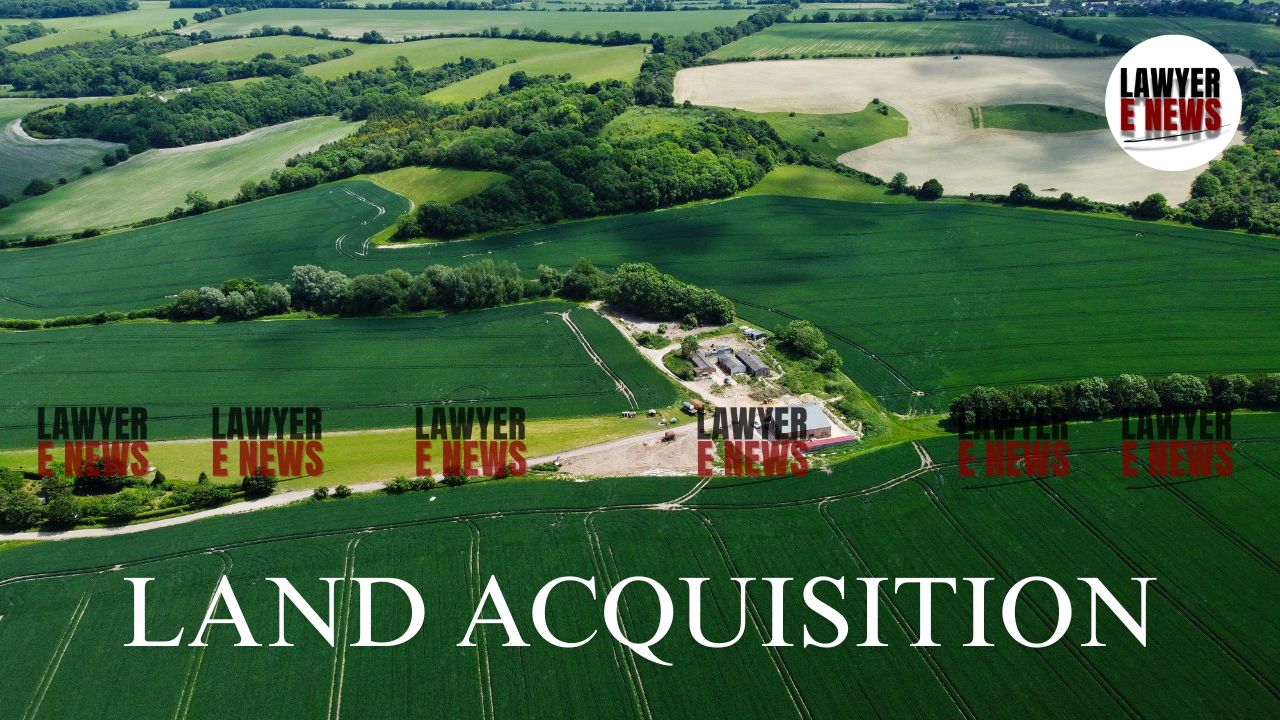-
by Admin
17 December 2025 12:49 PM



No Reduction Can Be Granted by Applying the Theory of Deduction Under the 2013 Act - Supreme Court of India settled a contentious issue regarding the determination of compensation under the Right to Fair Compensation and Transparency in Land Acquisition, Rehabilitation and Resettlement Act, 2013. In Madhya Pradesh Road Development Corporation v. Vincent Daniel & Others (Civil Appeal No. 3998 of 2024 & batch), the Court ruled that the “theory of deduction” traditionally applied under the 1894 Land Acquisition Act does not apply under the 2013 law, and that circle rates fixed under the Stamp Act are binding unless properly challenged and revised through lawful means.
Rejecting the appellant’s argument that the compensation based on guideline rates was excessive, the Court observed:
“We do not appreciate the appellant… complaining about the circle rate fixed by the State Government. If the circle rate is inflated or does not reflect the true market value, it is incumbent upon the State Government to take corrective steps.”
The matter arose from the acquisition of land in Jabalpur district for the purpose of widening and four-laning National Highway No.12-A. A Gazette Notification was issued on September 12, 2014, with the declaration of acquisition made on February 2, 2015. The Competent Authority, relying on Section 105(3) of the 2013 Act, adopted the Collector’s Guidelines under the Indian Stamp Act, 1899 to determine the market value of land, particularly those in Village Katiyaghat.
In one such instance, landowner Vincent Daniel was awarded Rs. 2.05 crore as compensation, which included solatium and valuation of assets. Dissatisfied, the landowners appealed for enhancement, while the Madhya Pradesh Road Development Corporation challenged the valuation on the ground that the land was undeveloped and the compensation was excessive.
The objections were dismissed by the District Court, and the High Court of Madhya Pradesh upheld the award on April 13, 2022, emphasizing that Section 26 of the 2013 Act excludes the application of the “theory of deduction”.
The key issue was whether the principle of deduction, commonly used to adjust compensation for undeveloped lands under the Land Acquisition Act, 1894, could be applied under the 2013 Act, especially in determining the market value using the Collector’s circle rates.
The Court clarified:
“No reduction in the amount can be granted by applying the theory of deduction. It has been left to the Collector’s discretion to make adjustments to the market value determined through Section 26(1), if deemed necessary.”
Emphasizing the binding nature of the statutory procedure in Section 26 of the 2013 Act, the bench held:
“Clause (a) to Section 26(1) mandates consideration of the market value specified in the Stamp Act. The highest value under clauses (a), (b), and (c) is to be taken as the market value. No averaging is permitted.”
The Court also distinguished between the Stamp Act guideline rates and the market value assessment under Section 23 of the 1894 Act, noting that the 2013 Act adopts a more structured and formula-driven approach, rendering older precedents applying the deduction theory irrelevant.
On the Role and Responsibility of State Authorities
The Court made scathing remarks on the appellant, a state corporation, for challenging the very rates notified by its parent government:
“We do not appreciate the appellant… complaining about the circle rate fixed by the State Government… The State Government or the development corporation cannot complain that they have been compelled to acquire land at the circle rate fixed by the State.”
Highlighting the economic and governance significance of scientifically fixed circle rates, the Court stated:
“Circle rates, when determined while accounting for factors that cause variations in the market price of land, can facilitate predictability in transactions and curtail litigation.”
It added that circle rates must reflect ground realities and be based on expert assessment, noting:
“Rational and fair circle rates reflect and are a prerequisite for good governance… Given the financial implications… the data and details for computation should be made public.”
The Supreme Court’s decision decisively affirms that market value under the
2013 Act must be based on the highest among the statutory criteria listed in Section 26, without reduction via discretionary doctrines like the “theory of deduction,” unless explicitly adjusted by the Collector for valid reasons.
In doing so, the Court protects landowners’ rights to fair compensation, discourages arbitrary undervaluation, and underscores the responsibility of public authorities to fix rational, transparent circle rates.
“It is the responsibility of the State Government to ensure that circle rates are neither inflated nor disproportionately low… Public authorities acquiring land must adhere to the same rates imposed on citizens.”
Date of Decision: March 27, 2025
